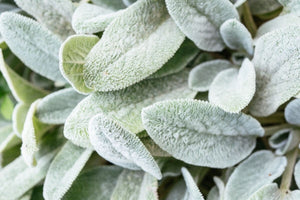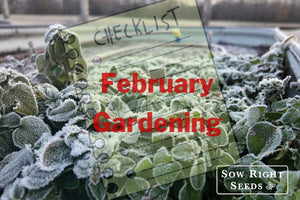How to Grow Acorn, Butternut and Other Winter Squash from Seed
SquashWinter squash brings to mind warm, savory butternut soup and roasted spaghetti squash on a cold evening. But summer is the time to grow these popular squashes.

Winter squash are different from Sumer squash because they have a hard skin. This allows them to be stored during the winter months.
Acorn and butternut squash are two of the most popular winter squashes to grow. They do well in small gardens and can be allowed to sprawl or grow vertically.
Technically, pumpkins are winter squashes. We have a separate growing guide for pumpkins and this guide will cover the smaller winter squashes, such as acorn, butternut, spaghetti, and delicata.

How to Grow Winter Squash from Seed
Winter squash are easy to start from seed. Squash seeds can be started indoors or planted directly in the garden. Start seeds indoors three to four weeks before transplanting outdoors. Wait to sow winter squash seeds outdoors until after all danger of frost has passed.
Plant seeds one inch deep, two or three seeds per hill. Keep the soil moist, and they will germinate in 5 to 15 days, depending on the variety and soil temperature.
Soil temperature between 65 and 75ºF is optimal for germination.
Once the seeds have germinated and have their first true leaves, you can thin them to two plants per hill.
Winter squash can take 60 to 100 days to reach maturity, depending on the variety.

Why do seed packets say to plant squash in hills?
You’ll notice on squash seed packages that it says to plant seeds in hills. There are several reasons for this. One is that by piling up a six-inch mound of soil that is a foot in diameter, the soil will warm up faster and stay warm. This allows you to plant those warm-weather crops sooner and have the seeds germinate. The hill method also improves drainage and keeps the water away from the base of the plant as you water around the bottom of the hill.
Tips for fail-proof winter squash seed germination
Plant squash seeds 1” deep.
Keep seeds and soil moist until germination.
Soil temperature should be between 65-75ºF.
Heirloom Winter Squash Varieties
Delicata Winter Squash
Delicata Winter Squash has thinner skin than other winter squashes. Its cream-colored flesh has a high sugar content and is sometimes called sweet potato squash.
Table Queen Acorn Squash
Table Queen Acorn Squash is a highly prolific vining winter squash. The 5-6" fruits have tender yellow-orange flesh that is excellent for baking, roasting, or stuffing. The hard green skin on acorn squash provides protection for long-term storage.
Waltham Butternut Squash
This delicious variety of Butternut squash is known for being easy to grow. Butternut squash stores exceptionally well and can be used for roasting, soups, and a variety of delicious winter recipes.
Spaghetti Squash
Spaghetti squash's unique texture sets it apart from other winter squash. Its neutral flavor pairs well with sauces and seasonings.
How to Grow Winter Squash Plants
Winter squash isn’t hard to grow, but it does take patience to wait for the delicious harvest. To set your winter squash plants up for success, give them full sun and rich, fertile soil. You can also plant flowers nearby to encourage beneficial pollinators to visit.

Sun
Winter squash needs full sun for optimal growth. The minimum amount of sunlight is 6 hours.
Soil
Amend your soil with plenty of organic matter before sowing winter squash seeds. Rich, fertile soil will give your squash plants the necessary nutrients to grow and develop fruit.
Spacing
Give your winter squash plants room to spread. They can easily spread four to six feet. Space plants according to the seed packet instructions. You can also trellis winter squash plants. Grow vertically takes up less space and some varieties of squash are vining plants.
Water
As the squash fruits grow, they need lots of water. Keep the soil moist but not waterlogged. If the leaves wilt in the afternoon sun, that is normal, and they should spring back by morning. If they look wilted in the morning, the plants aren’t getting enough water.
Fertilizing
Once the squash plants start producing flowers, you can add a liquid fertilizer once a week.
Pollinating
Winter squash plants produce both male and female flowers. You’ll notice male flowers developing first. The female flowers will have a small fruit beneath the flower. If you notice these female flowers falling off, it means they haven’t been pollinated. You will need to pollinate by hand if this is the case. Then, look around and see if you need to plant flowers to encourage more pollinators to visit your garden.

Can you grow winter squash on a trellis?
Yes, you can grow winter squash on a trellis. It’s a great way to save space, keep the squash off the ground, and help prevent pest problems. Some winter squash varieties send out tendrils and are considered vining plants. Sow Right Seeds acorn squash is a vining variety, and Waltham butternut is an excellent option for trellis growing.
Make sure you use a sturdy trellis and put in your supports when planting or transplanting to avoid damaging the roots. Prune the leaves off the bottom as the plant grows so nothing touches the ground.
Solutions for Common Pests and Diseases
Unfortunately, there are some common pests and diseases that can threaten your plants. But with some diligence, you can protect your winter squash plants.
For beetles and bugs, the best line of defense is to prevent the bugs from landing and laying eggs. Use insect netting over newly planted winter squash plants. Check the underside of the leaves for any eggs and remove them.
Squash bugs are the worst! You can read more about how to combat these bugs.
Squash vine borers lay eggs in the ground near the base of the squash plant. When they hatch, they burrow into the vines. Using insect covers can keep them from landing to lay their eggs. Some gardeners let their winter squash plants spread so that they can create new roots where they touch the ground. This can help have more ground contact and roots when the vine borer enters and destroys the main stem. Sometimes, this works, and sometimes, it doesn’t.
Powdery mildew and other fungus problems can be mitigated by ensuring sufficient airflow and efficient ground watering. Water the soil and keep the leaves dry.
You can prune bottom leaves and keep them off the ground. When pruning leaves, prune as close to the main stem as possible. The hollow stems can allow pests and diseases. It should be solid, not hollow, at the cut spot.
Harvesting Winter Squash
Unlike summer squash, winter squash needs to stay on the vine long enough to fully develop. When a winter squash is ready for harvest, it will have a thick skin and firm flesh inside. This thick skin helps winter squash store well through the cool winter months.
In addition to the squash itself, the squash flowers are edible. You can pick them or wait for them to fall off. They are often sautéed or battered and fried.
When is it time to harvest winter squash?
Leave your winter squash on the vine as long as possible, but pick them before the first frost, as this can affect the texture and their ability to cure and be stored.

When is Butternut squash ripe?
A butternut squash will be ripe and ready to harvest when the stem is dry, and the color is an even light orangish color without green. The skin will be thick and not easily dented with a fingernail.
Cut it from the vine and leave at least 2 inches of stem on the squash. This will help it store longer.
Butternut squash needs to cure for about 1 to 2 months and can be stored for up to 6 months.

When is Acorn squash ready to harvest?
Acorn squash is ripe when it is dark green with an orangish “ground spot.” The skin will be thick.
Acorn squash continues to ripen after it is harvested. It doesn’t have to be cured, and you can eat it ten days after harvest and up to 2 ½ months later.
When do you harvest Delicata squash?
Delicata squash is ready to pick when the skin is hard. Cut it from the vine with at least two inches still on the squash. Delicata can be stored for up to 3 months;

When is Spaghetti squash ripe?
Spaghetti squash can be harvested and eaten on the same day. It doesn’t need curing. The skin will be dark orangish yellow with a dull sheen.
Winter squash are easy to grow from seed. These heirloom varieties are reliable producers with delicious flavors. With trellising and good pest control, you’ll enjoy the healthy benefits of growing your own winter squash.
Written by Beverly Laudie
Popular Posts
-

How to Grow Lamb's Ear Plants - A Sensory Garden Favorite
-

Show Your Garden Some Love - February Garden Chores







Leave a comment